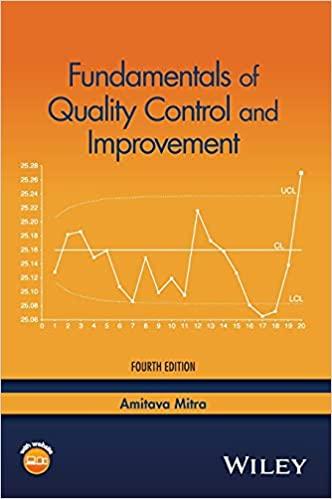Question
CASES: OCCASION A. Time: 07:45, Location: Room, Area: Inside. On Monday at 07:30 Marcela Mendez arrived with her mother (30 months). Marcela was left crying
CASES:
OCCASION A. Time: 07:45, Location: Room, Area: Inside. On Monday at 07:30 Marcela Mendez arrived with her mother (30 months). Marcela was left crying and screaming because her mother went to work. The educator calmed down Marcela and gave her breakfast. At 07:45 Leah Wellington (28 months old) arrived at the center and was very happy because she had brought a pepa pig ball. She sat next to Marcela to have a breakfast. At a time when the educator was receiving another child, Marcela bit and scratched Leah.
OCCASION B. Time: 10:00, Location: Play room , Area: Inside. All the children were playing with the blocks, Leah had a big tower built and she was proud that she had done it, at that moment Marcela arrived and wanted to play with her but Leah said no, so Marcela sat next to Leah and She started to build her own tower but she wasn't able to make it as big as Leah's so it was easy for her to knock down Leah's tower and run away.
OCCASION C. Time: 04:40 pm, Location: sandpit , Area: outside . Marcela is one of the first children to arrive in the morning and is one of the last to leave kindergarten. Lately she always has to be supervised by an educator because she is a bit aggressive, she tries to play and interact with Leah and Matilda but if she doesn't get the toys at the time she wants she starts pushing, scratching and biting others to so you can get what you want.
OBSERVATION OF SELF-REGULATION, PRO-SOCIALS SKILSS AND CENTRE STRATEGIES.
1. Relate each case in the context of "anecdotal observation"
OCASION A:
OCASION B:
OCASION C:
2. Analysis-please list the emerging Pro-social skills observed
OCASION A:
OCASION B:
OCASION C:
3. Using your observations above identify at least one (1) example for each of the Domains of Self-Regulation observed.
-Biological Domain:
-Emotion Domain:
-Cognitive Domain:
-Social Domain:
-Pro-social Domain:
4. Identify two (2) behaviours observed above which you feel are developmentally appropriate. Give a reason this behaviour is considered developmentally appropriate.
-Behaviour 1:
-Reason why they are considered developmentally appropriate:
-Behaviour 2:
-Reason why they are considered developmentally appropriate:
5. Identify how the physical, social environment and curriculum impacted on children's behaviour based on the above observation.
-Physical Environment:
-Social Environment:
-Curriculum:
6. Identify at least four (4) strategies used by educators to support the development of children's pro-social skills.
-Strategy 1:
-Strategy 2:
-Strategy 3:
-Strategy 4:
7. Reflect on your own skills and identify one strategy used by educators you would like to model to support the development of children's pro-social skills.
Choose an area you would like to improve on. E.g. I would like to work on my skills to assist children in their decision-making processes. I believe I need to extend on my understanding of what types of language I can use to better support children.
-Area to improve:
-Strategy:
ACTIVITY 2:
Develop Guidelines That Support Positive and Respectful Interactions and Behaviour
REPORT ON CENTRE-CHILDCARE PHILOSOPHY, POLICIES AND PROCEDURES
-Philosophy:
-Policies:
-Procedures:
1. Theories reflected in Philosophy (Please list below e.g. Attachment Theory):
2. Identify 5 behaviour guidance strategies/practices observed and outlined in Policies and Procedures
2.1. Strategies/Practices:
Main Theories Followed:
National Quality Standard's Followed:
2.2. Strategies/Practices:
Main Theories Followed:
National Quality Standard's Followed:
2.3. Strategies/Practices:
Main Theories Followed:
National Quality Standard's Followed:
2.4. Strategies/Practices:
Main Theories Followed:
National Quality Standard's Followed:
2.5. Strategies/Practices:
Main Theories Followed:
National Quality Standard's Followed:
3. List 3 Early Childhood Code of Ethics which are reflected in practice in relation to guiding behaviour.
4. Identify one (1) of the relevant United Nation's Articles which are upheld by the Centre's Philosophy, Policies and Procedures in relation to guiding behaviour.
5. Identify any additional relationship-based strategies which could be included in the Centre's Philosophy, Policies and Procedures based on your research.
6. Collaborate with staff and identify how strategies were originally developed and implemented.
6.1. How were strategies developed and implemented?
6.2. Identify how you sourced this information:
7. If I saw a colleague implementing behaviour that wasn't consistent with centre's philosophy, policies and procedures, what would you do to mentor and coach this colleague?
8. Critically reflect on how your own values impact your perspectives on behaviour.
9. Identify how you will use critical reflection to recognise and respond to this impact in the future.
10. List the features of physical and social environments, and the aspects of the curriculum which nurture positive relationships and a sense of belonging. (minimum of 3 in each)
10.1. Physical Environment:
10.2. sOCIAL Environment:
10.3. Curriculum:
11. Give one (1) example for each of the following.
11.1. How you provided children with clear and consistent support to encourage positive interactions and behaviour:
11.2. How you developed/ supported children's self-regulation:
11.3 How you developed/ supported children's positive self-concept and self-esteem:
11.4. How you assisted the children to build resilience:
11.5. How you assisted children to resolve conflicts appropriate to their age and stage of development:
11.6. How you collaborated with children to develop alternative responses and behaviours:
12. How does the Centre currently communicate with families about behaviour?
Step by Step Solution
There are 3 Steps involved in it
Step: 1

Get Instant Access to Expert-Tailored Solutions
See step-by-step solutions with expert insights and AI powered tools for academic success
Step: 2

Step: 3

Ace Your Homework with AI
Get the answers you need in no time with our AI-driven, step-by-step assistance
Get Started


